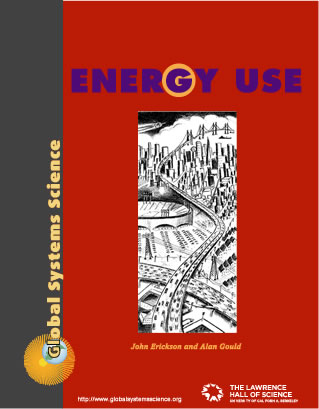EU1C. Stay Current—How People Use Energy

2017-01-22. See the 1,000-Year-Old Windmills Still in Use Today National Geographic. Excerpt: 2min 49sec video These amazing windmills are among the oldest in the world. Located in the Iranian town of Nashtifan, initially named Nish Toofan, or “storm’s sting,” the windmills have withstood winds of up to 74 miles an hour. With the design thought to have been created in eastern Persia between 500-900 A.D., they have been in use for several centuries. https://www.youtube.com/watch?v=3qqifEdqf5g&feature=youtu.be
2011 April 17. When It Comes to Carbon Footprints, Location and Lifestyle Matter. Excerpt: A new study by researchers at the University of California, Berkeley, suggests that who you are and where you live make a big difference in which activities have the largest impact.
Carbon footprints are a measure of the greenhouse gases released during the production, use and disposal of products and services. The production phase includes all processes between the time raw materials are extracted from Earth until they reach consumers as finished products in stores. The study considers the carbon footprint of all household economic activity, including transportation, energy, food, goods, services, water and waste.
As an example, the report highlights the carbon footprints of two fictitious households: an upper-income couple living in San Francisco with no children, and a middle-income family with three children living in St. Louis, Mo. Each of these households contributes to the atmosphere about the same amount of greenhouse gases per year, but the sources of those emissions are very different, the study found.
2010 March 25. Audit Finds Vulnerability of EnergyStar Program. BY Matthew L. Wald, NY Times. Excerpt: WASHINGTON — Does a “gasoline-powered alarm clock” qualify for the EnergyStar label, the government stamp of approval for an energy-saving product?
Like more than a dozen other bogus products submitted for approval since last June by Congressional auditors posing as companies, it easily secured the label, according to a Congressional report to be issued Friday. So did an “air purifier” that was essentially an electric space heater with a feather duster pasted on top, the Government Accountability Office said.
In a nine-month study, four fictitious companies invented by the accountability office also sought EnergyStar status for some conventional devices like dehumidifiers and heat pump models that existed only on paper. The fake companies submitted data indicating that the models consumed 20 percent less energy than even the most efficient ones on the market. Yet those applications were mostly approved without a challenge or even questions, the report said.
Auditors concluded that the EnergyStar program was highly vulnerable to fraud….
Previous reports have suggested that the EnergyStar label is not always a complete or useful guide to the best consumer choices. Last October, for example, the inspector general of the E.P.A. said that 100 percent of the computer monitors that carried the EnergyStar logo had indeed met requirements. But so did 80 percent of the monitors that did not have the logo; the manufacturers had apparently not sought approval. For computer printers, 95 percent of the ones with the logo qualified, but so did 60 percent of the ones that did not have the logo.
And some consumer products lacking EnergyStar approval consumed less energy than those that had it, the audit found….
2005. Historical Perspectives of Energy Consumption. Excerpt: Throughout history, man has developed ways to expand his ability to harvest energy. The primitive man found in East Africa 1,000,000 years ago, who had yet to discover fire, had access only to the food he ate so his daily energy consumption has been estimated at 2,000 Kcal or 2,000 dietary calories. Energy consumption of the hunting man found in Europe about 100,000 years ago was about 2.5 times that of the primitive man because he had better methods of acquiring food and also burned wood for both heating and cooking. Energy consumption increased again by almost 2.5 times as man evolved into the primitive agricultural man of about 5,000 years ago who harnessed draft animals to aid in growing crops. The advanced agricultural man of 1400 A.D. northwestern Europe again doubled the amount of energy consumption as he began inventing devices to tap the power of wind and water, began to utilize small amounts of coal for heating and harnessed animals to provide transportation.
The dawn of the age of industrialization, ushered in by the invention of the steam engine, caused a 3-fold increase in energy consumption by 1875. Among other things, the steam engine allowed man to unlock the Earth’s vast concentrated storage deposits of solar energy – coal, gas and oil so he no longer was limited to natural energy flows. Whereas increases in energy consumption had been gradual throughout history, once industrialization occurred, the rate of consumption increased dramatically over a period of just a few generations. The technological man of 1970 in the U.S. consumed approximately 230,000 Kcal of energy per day (~115 times that of primitive man) with about 26% of that amount being electrical energy…. [Old URL – http://www.wou.edu/las/physci/GS361/electricity%20generation/HistoricalPerspectives.htm ]

Non-chronological resources
300 Years of FOSSIL FUELS in 300 Seconds:
Short animation showing the history of fossil fuel use.
The Users Guide to Energy (videos from The Atlantic) http://www.theatlantic.com/special-report/users-guide-energy

